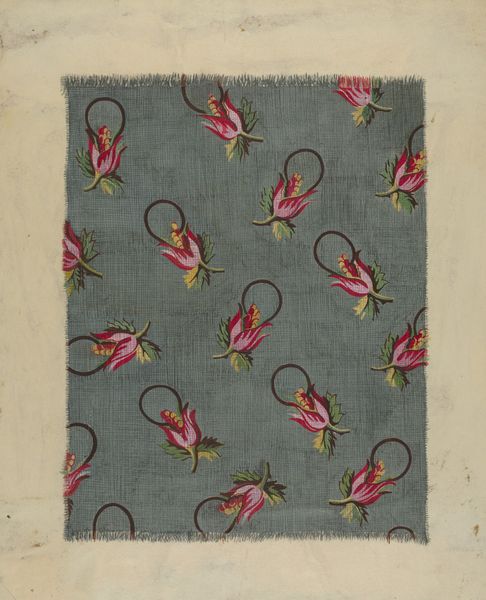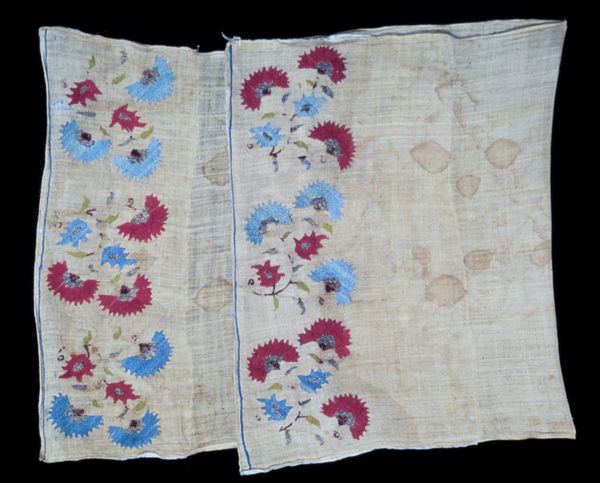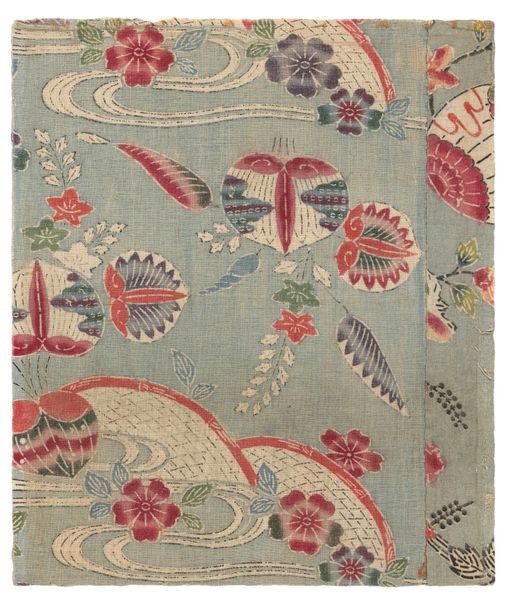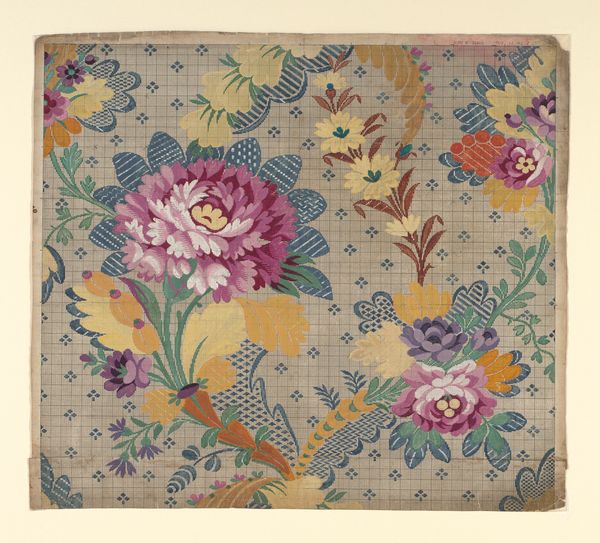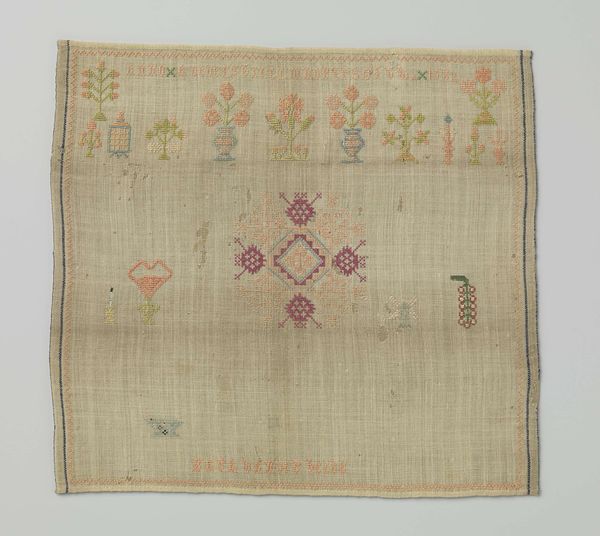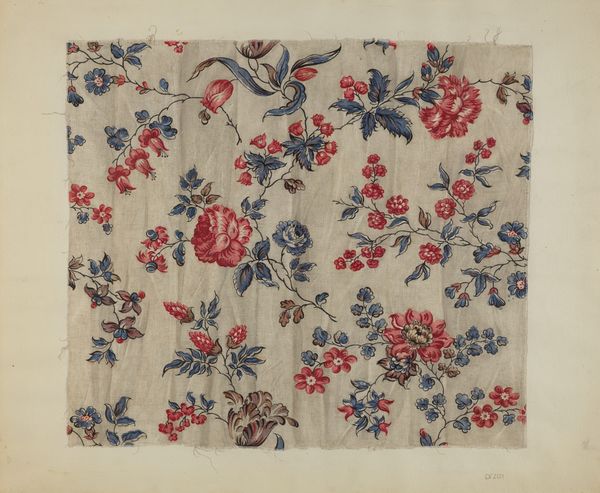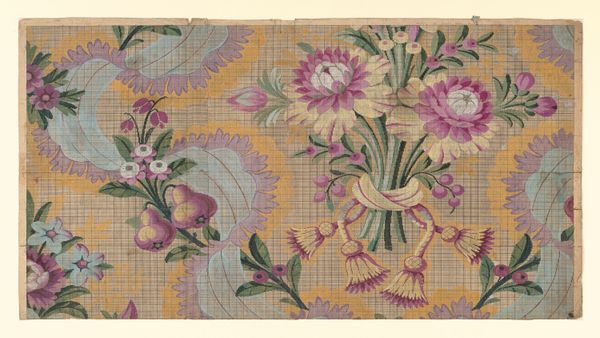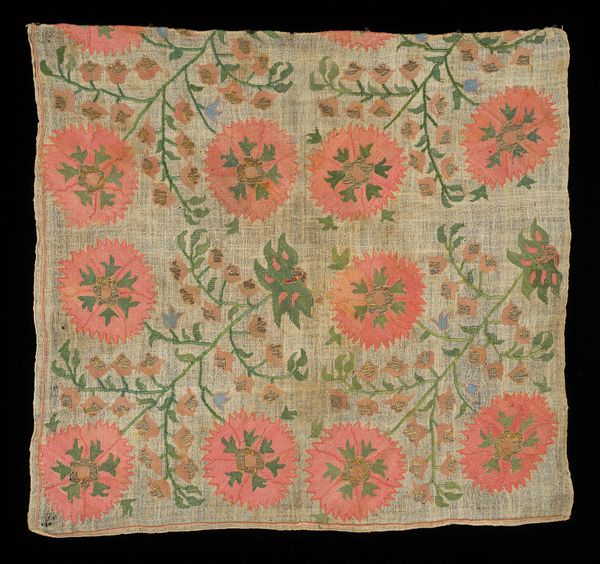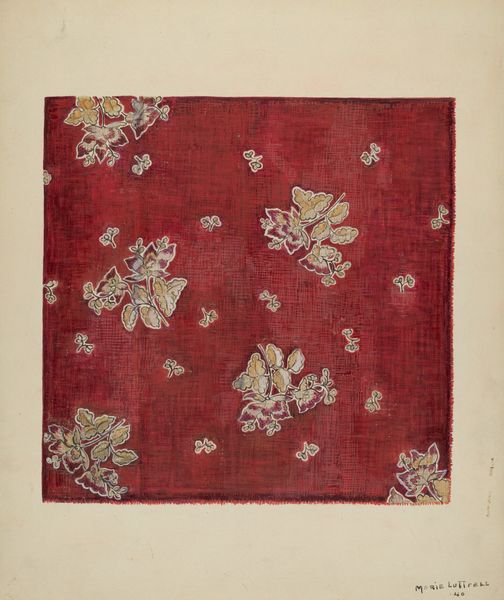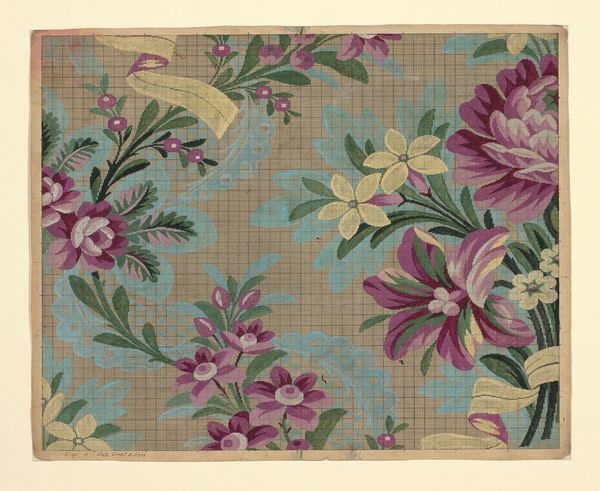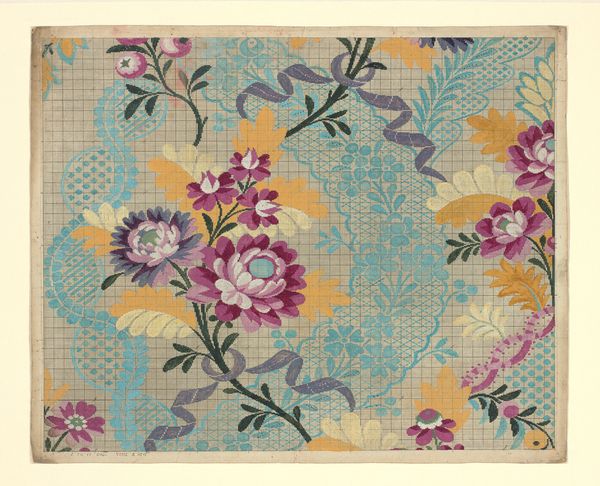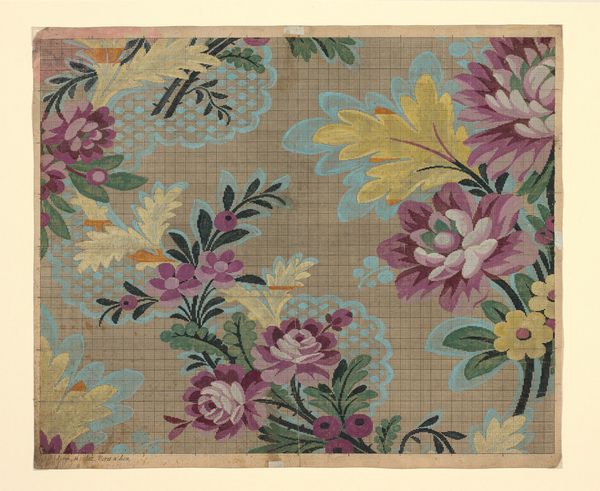
panel, pigment, silk, textile
#
panel
#
pigment
#
muted colour palette
#
silk
#
textile
#
collage layering style
#
handicraft
#
folk art
#
hand-embroidered
#
france
#
watercolour bleed
#
mixed medium
#
mixed media
#
decorative art
#
watercolor
Dimensions: 11 1/4 x 9 1/2in. (28.6 x 24.1cm)
Copyright: Public Domain
Curator: Immediately striking, isn’t it? A delicate and faded charm. Editor: Absolutely. I am drawn to this 18th-century “Panel,” a textile work made with pigment on silk, presently held at the Minneapolis Institute of Art. It whispers of something very old, fragile. The edges are frayed, giving it a sense of history's roughness, juxtaposed with the delicate painted decoration. Curator: It speaks volumes through its imagery: we see rose motifs with leafy borders framing them, evoking love, beauty, and perhaps even the brevity of life. The presence of these symbols would be significant for the aristocratic audiences of France during this era. Can you elaborate on how this Panel would have been fabricated? Editor: Certainly. Considering it’s likely French in origin, and given the period, the production process likely involved a division of labor. The silk would have been woven—possibly in Lyon, a center for silk production—then sent to workshops where artisans, mostly women, meticulously painted the design. The fact that this appears to be hand-painted—you can see slight inconsistencies and watercolour bleed—suggests a higher value and more bespoke production compared to printed textiles that were also emerging then. It tells of guilds, apprenticeship, specialized skills. Curator: So, even in what seems to be a decorative piece, the symbols tie back to human emotions. Are the roses meant to communicate specific virtues or affections through the panel, given the context in which it was consumed? Perhaps serving as coded communication, a sentimental offering through their particular form or color? Editor: I think that's right. The careful construction, and the materials alone communicate wealth. Also, let’s not underestimate the textile itself—silk signifies luxury. It represents the access that its owners would have to faraway trade routes. Curator: The image and its symbolism combine to unlock these various strata of cultural insight; and material gives voice to the craft practices that formed part of its origins. Editor: Indeed, looking beyond the final picture helps reveal its value in early modern society, both as craft and commodity.
Comments
No comments
Be the first to comment and join the conversation on the ultimate creative platform.
